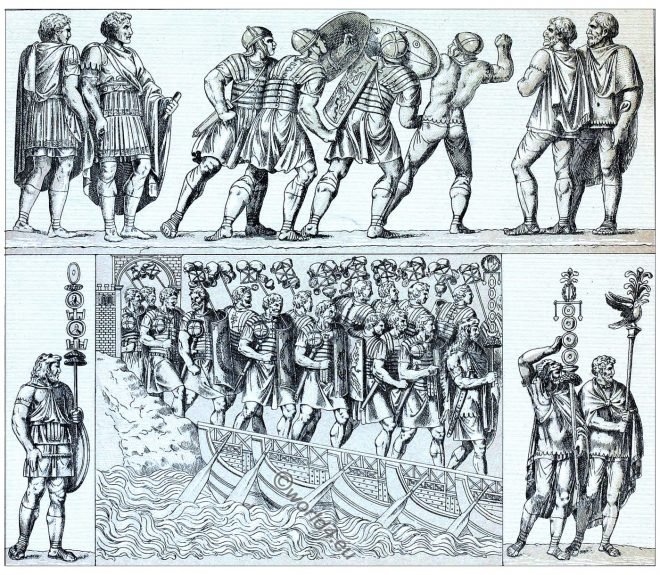The Assyrians were warriors, as their costume shows, with its heavily ornate, barbaric splendour. They wore much more jewellery than the Persians.
Tag: Ancient Military
Shoes of antiquity. Sandals, closed footwear of the ancient world.
Classical Antiquity. Footwear. Fashions and Customs. Calceus, Ocrea, Caliga, Campagus, Crepida, Solea, Pero, Ceremonial shoes, Runner’s boots, Lace-up shoe.
The Roman legionary. Reconstructed after reliefs of the Trajan’s Column.
Roman legionary. Reconstructed after reliefs of the Trajan’s Column.
Greek Military. Two warriors in armor of iron, bronze, and leather.
The two warriors in the picture are wearing or carrying most of the types of war material used by the Greeks for over a thousand years.
Reconstructed Gallic warrior from about 400-200 B.C.
Gallic warrior from about 400-200 before Christ. Reconstructed after antique sculptures and original finds. Gimbel’s weapons collection.
The toga of a Roman senator. The armor of a Roman general.
Costume of the Roman Empire 31 B.C.- 476 A.D. The figure symbolizes the two characteristics that made Rome great statesmanship and military power
The Roman army. The legionary soldier. Equipment, assault weapons.
The Roman army. The legionary soldier. The complete equipment of the legionaries. The assault weapons. Military of the Ancient World.
A colossal head of Minerva, a specimen of very early Greek work.
Ancient Greek sculpture. Head of Minerva. A description of the collection of ancient marbles in the British Museum
The Etruscans. Culture, costumes, warriors in Etruria.
The Etruscans were an ancient people in Etruria, who lived in northern central Italy. The Etruscan culture can be traced in this area between 800 B.C. and the second half of the 1st century B.C.
Military of ancient Rome. Roman legions. Field signs. The legionary eagle.
Military of ancient Rome. Roman legions. Field signs. The legionary eagle. The Signifier, Aquilifer, Pincipales. The Roman army. The standard of the barbarians.










